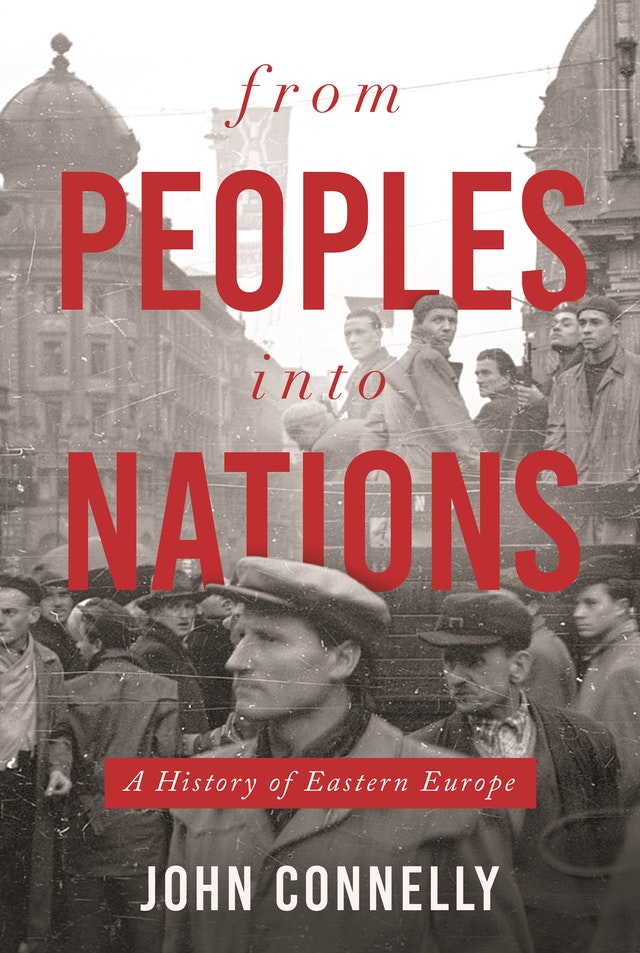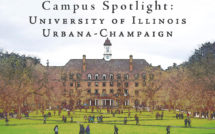

John Connelly’s recent book From Peoples into Nations is an ambitious and expansive work covering the history of several Eastern and Central European nationalities from their inception as imperial subject-peoples in the eighteenth century to their development into nation-states in the present day. Prompted by modernization and centralization pressures by their governing empires, a uniquely Eastern European sense of nationalism emerged that was characterized by a fear of cultural annihilation. As a result, nationalist movements emerged among Czechs, Slovaks, Hungarians, Poles, Bulgarian, Romanians, Croats, and Serbs, which sought to develop and assert a national vernacular before then moving towards independence as conflicts between ethnicities continued to promote fears of ethnic destruction. After receiving independence between the Congress of Berlin in 1878 and the end of World War I, these new nation-states became “miniature Habsburg empires” (9) as ethnonational interests, guided by the newly dominant ethnicity, moved from ethnic self-protection towards asserting political sovereignty internationally and political supremacy over minorities domestically, manifesting at times as a prototype of fascism in the early twentieth century. This continuous defining of national selfhood persisted into the Cold War, where the Eastern European states now under socialism continued to promote forms of nationalism, even if nationalism itself contradicted the traditional model of Marxist socialism, which believed that nationality was an irrelevant identity. This enduring character of threatened nationalism continues to exist in the politics of Eastern European states today, demonstrated by the embrace of neoliberalism and, more recently, populism.
Connelly’s work takes a stunningly large scope as he explains and compares the development of nationalism in several European ethnic groups, demonstrating an excellent understanding of many Slavic languages in addition to German and Hungarian. The cases of Czech, Polish, Hungarian, Croat, and Serb nationalisms are essential core aspects of any work about the modern history of Eastern Europe, but Connelly also does well to complement these cases by exploring the development of nationhood among groups that feature less prominently in the historiography of the region, including the Slovaks and Romanians.
Yet, there are some issues with Connelly’s range of subjects that must be confronted. For example, despite granting a great deal of space in his book to investigating the development of nationalism among the South Slavs, the author conspicuously leaves out the example of the Slovenes, whose existential national conflict against the Austrian Germans and the Italians, as well as their struggle to promote their language in the face of these competing ethnicities, continues to inspire disagreement and political controversy in the present day. The Slovenes, like the Croats, helped pioneer the development of a language (an important subject matter for Connelly in his book) and identity for the South Slavs, and they too were roped into the Serbian-dominated state of Yugoslavia by force after World War I. The ethnic conflict between Austrian Germans and Slovenes in Styria and Carinthia during the First Austrian Republic also helped cast a number of the most wicked Austrian Nazis, including Odilo Globočnik (who, in the highest irony of mixed identity, has an unmistakably Slavic surname). The Austrian-Italian-Slovene borderland region is still ethnically contentious, with the struggle for Slovene language rights and Austrian far-right radicalism remaining highly relevant today. Considering the space Connelly uses for the other South Slav ethnicities, the Slovenes would have been a natural case to study alongside them, and their absence is distinctly noticeable.
Additionally, this reviewer questions the seemingly sudden inclusion of East Germany as a case example within the Cold War section. As the primary theme revolves around nationalism predominantly among the Slavic, Magyar, and Romanian ethnicities, East Germany’s inclusion was thematically unsuitable to the work; Germany had previously not been explored as a national case except for when Connelly attributes the philosophical foundations of Eastern European nationalism to German thinkers like Hegel and Herder. The Germans are otherwise framed elsewhere in the work as the generalized political opposition to Eastern European nationalisms, right up until East Germany is introduced as a focus example.
The case for the continuity of nationalism during the communist period was also, at times, tenuous, and this reviewer finds that Chapter 23, “Real Existing Socialism: Life in the Soviet Bloc,” in particular, fails to remain entirely consistent with the theme of nationalism that otherwise undergirds Connelly’s book. Although interesting and well-written, everyday life and economic (to avoid the term “consumer”) culture had little to do with the political and civic development of nationalism. If anything, the encroachment of “Western” culture in the form of blue jeans in Czechoslovakia or American television programs in East Germany (671) are missed opportunities to discuss the emergence of globalist culture even during the Cold War era; as historians like Reinhold Wagnleitner and Victoria de Grazia have noted, the process of “Coca-Colonization” has been perceived by many as an existential threat to national language and culture in the European sphere.
The problems of globalization could also have been used as a springboard to investigate nationalism in the contemporary political sphere of Eastern Europe, where political leaders such as Viktor Orbán have framed their political ideology as a defense of national and cultural sovereignty against the encroachment of the European Union and United States. In any case, Connelly appears to view the integration of the EU as a net positive in terms of building democracy and promoting economic prosperity, with integration being described as a “return to Europe” (800), thereby suggesting that this process was a natural matter of course. Nonetheless, this is an unexpected result that in, some ways, contradicts the author’s promise to investigate Eastern Europe’s negativity towards the EU at the end of his introduction, where he cited a statement by Viktor Orbán, saying that the “survival of the Slovenian nation” depended on electing an anti-EU candidate (19). Rather than discussing how the EU can be a perceived threat to ethnic survival, Connelly prefers to talk about pro-European protestors in Budapest, as well as Orbán’s close ties with Putin and the Hungarian prime-minister’s calls to protect ethnic Hungarians in Ukraine—a country that is not covered in any specific detail elsewhere in the book.
Otherwise, Connelly adheres consistently to his main underlying theme of nationality as being defined through language and the concept of constant ethnic endangerment, although these ideas become harder to detect once the respective nation-states emerge during his sections on the Interwar and the Cold War periods. Part of the reason for this difficulty is because the immediate danger of linguistic and cultural extinction is dampened by the existence of a nation-state that can promote the development of its vernacular while also providing the force necessary to assert ethnic sovereignty. If anything, the eviction of the Germans from Czechoslovakia and Poland after 1945, for example, could have been emphasized more strongly as an instance where the state took active steps to ensure the safety of its dominant ethnicity once and for all by removing an ethnic group, which had been seen as a perennial source of opposition since the formation of the nationalist idea.
In this regard, Connelly’s approach to nationalism highlights a fascinating aspect that fills an intellectual gap in the way nationalism is understood: how does the seemingly “peaceable” idea of nationalism framed as national self-determination become the violent force of ethnic hatred demonstrated by Nazi Germany in the 1940s and the Yugoslav Wars of the 1990s? Connelly likewise provides the answer that nationalism was never an entirely peaceful affair when it was always framed in the light of imminent ethnic extinction, even as early as the eighteenth century. Although Connelly tries to divorce the concepts of Eastern European nationalism from Western European variants, we cannot forget that the rallying cry of early French nationalism during the Jacobin period was “La patrie en danger!” Connelly therefore makes clear that nationalist advocates among the Czechs, Poles, Slovaks, or others, perceived their culture and language to be in danger of annihilation from outside encroachment, and therefore, cooperation with other ethnic groups was not an option, and in some cases, was outright treason.
From here, Connelly also provides a novel contribution to our understanding of the origins of fascism, verging from the primary historiography asserting its beginnings in Italy by suggesting that the sociopolitical conditions of Bohemia and Hungary also fostered the emergence of fascism, even if it never developed a popular and persistent native following in either country and had to be reintroduced by the foreign force of Germany. The reader is reminded that out of the chaotic back-and-forth struggle between Germans and Czechs in Bohemia during the last decades of the nineteenth century, Bohemian Germans (and the wider community of German Austrians) who felt existentially endangered by the development of Czech nationalism formed their own ultranationalist faction in defense of their identity, which evolved to become the National Socialist German Workers Party.
From Peoples into Nations serves as a strong contribution to the field of Eastern European and nationalism studies. For experienced scholars of nationalism, Connelly provides a new and interesting approach to understanding Eastern European nationalism that is tailored specifically to the region’s patterns of cultural, social, and political development. Specialist scholars may also appreciate Connelly’s examination of lesser-explored nationalist movements, such as the Slovaks or Romanians. Historians of the Habsburg Empire may also enjoy this work as a modernized and updated successor to Robert Kann’s dual volume work The Multinational Empire; in doing so, Connelly takes a renewed understanding of Eastern Europe made available by the fall of the Iron Curtain while also expanding the historiography of nationalism beyond the Habsburg Empire and into the present day. Whereas Kann naturally leaves off on the collapse of the Habsburg Empire, Connelly emphasizes the continuity of nationalism with Connelly making the point that these movements did not end at independence. Furthermore, Connelly’s work suggests that feelings of national insecurity persisted after the new states of “brother peoples” were established; the violently antisemitic and ethnically intolerant behavior of the Slovak, Croat, and Romanian ethno-states during World War II, for example, suggest a deep insecurity about the survival of smaller ethnicities without a clear historical nation that have to share an ambiguous ethnic space with others.
Connelly’s general methodology, however, is less innovative than his argument, as his work frequently verges into styles of “Great Man history,” where the historical narrative is driven mostly by male figures in elite positions such as academia or political leadership. The author attempts to sidestep this, however, with the argument that the nationalist movements of his study were somehow inevitable, even if the characters who championed them were different than the ones who did historically; this is flirting dangerously with counterfactuals. Nonetheless, the author’s actual writing suggests that important events occurred because of the decisions made by important men. Habsburg historians of the revisionist school may also disagree with Connelly’s determinism that movements towards national independence were a matter of unpreventable fact, as well as his depiction of an Austria-Hungary staffed by political figures who were both cluelessly inept and inevitably powerless in dealing with the nationalism crisis.
Because of Connelly’s broad scope and more traditional historiographical approach, this book will be the greatest benefit to new scholars studying the history and politics of Eastern Europe and will serve them as a useful introduction to the subject matter. It covers the most important case examples with strong detail and flowing prose. It appropriately introduces the most important intellectual and political figures in this region during the period scope of Connelly’s book and adheres clearly and consistently to his major themes throughout it. As such, From Peoples into Nations serves as a solid starting point from where aspiring scholars can begin before going into more detailed studies of specific nations or events.
Alec Medine is a recent Master of Arts graduate in Global, International, and Comparative History at Georgetown University. He focuses primarily as a historian of modern Austria with a specific interest in the Austrian Resistance and their role in combating far-right thought and promoting democracy after World War II.
From Peoples into Nations: A History of Eastern Europe
By John Connelly
Publisher: Princeton University Press
Hardcover / 968 page / 2020
ISBN 9780691167121
Published on August 4, 2020.




